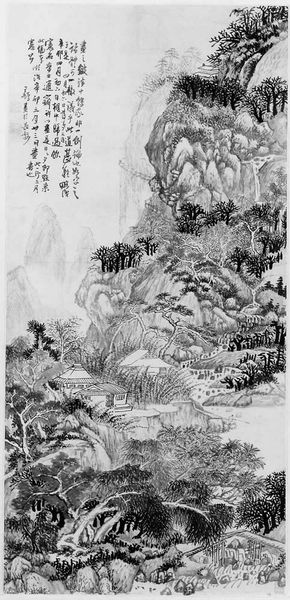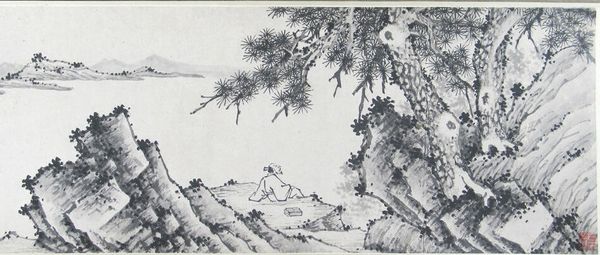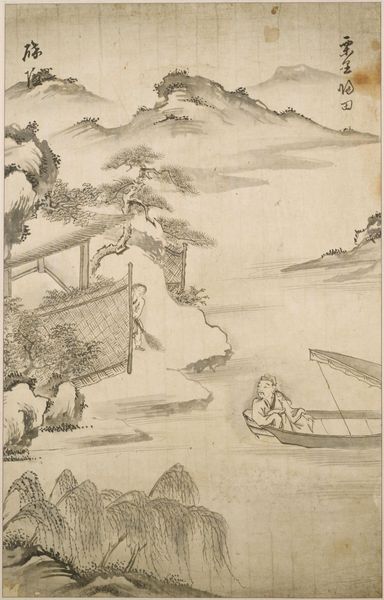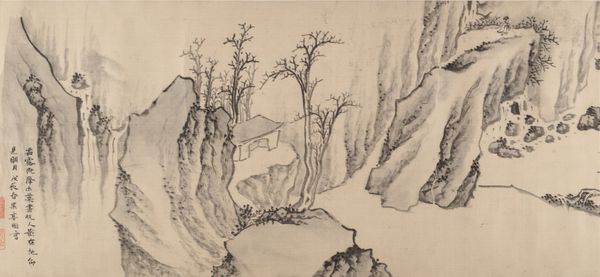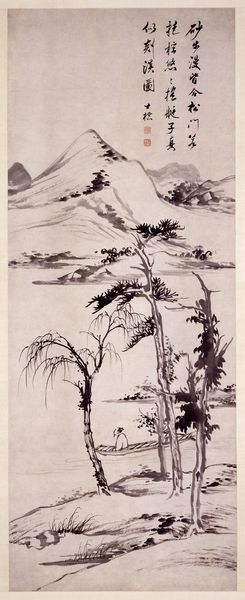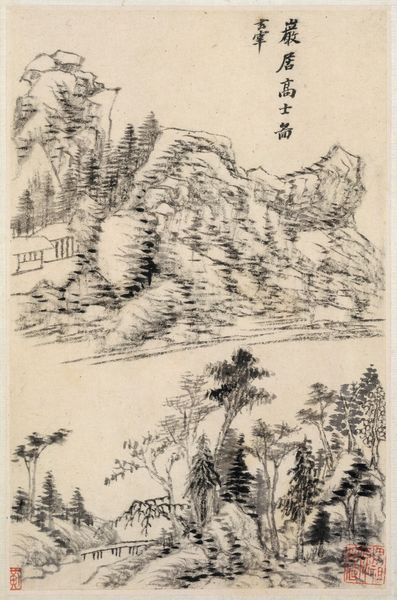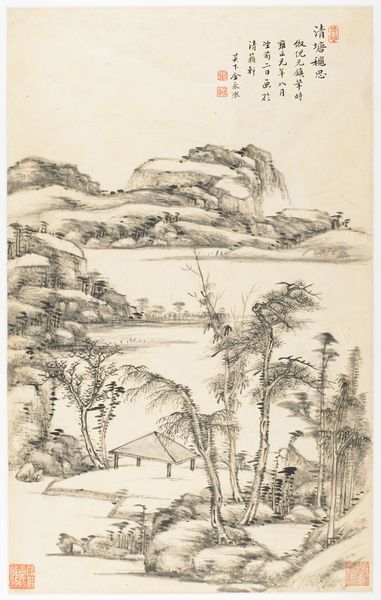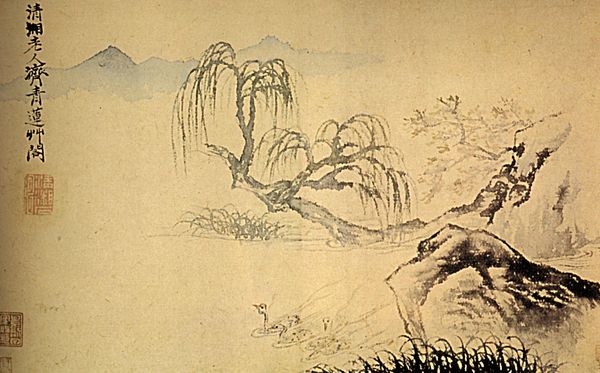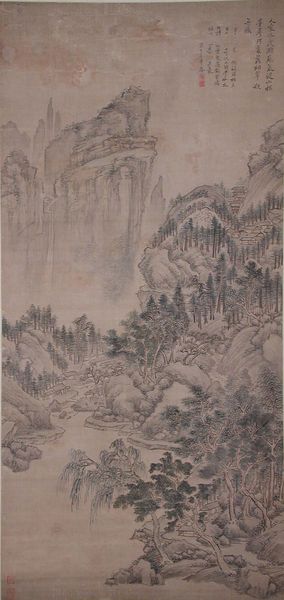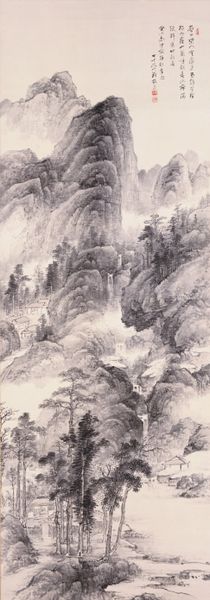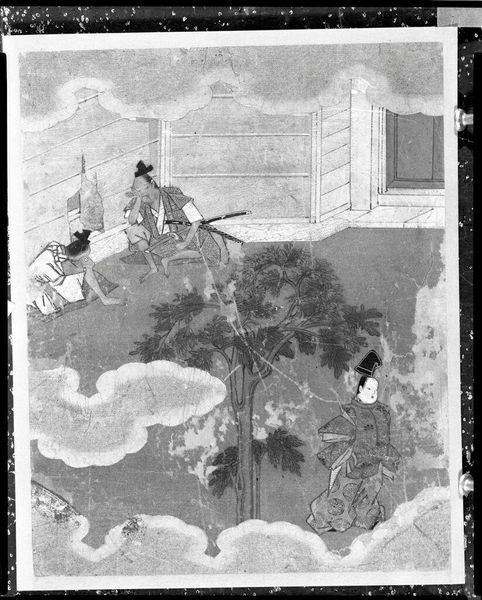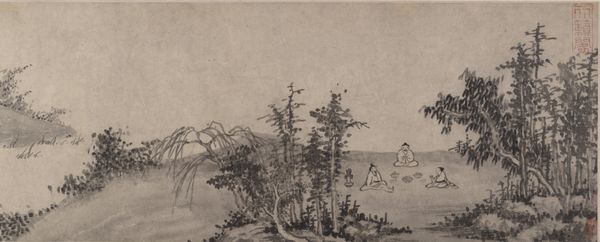
drawing, paper, ink
#
drawing
#
asian-art
#
landscape
#
figuration
#
paper
#
form
#
ink
#
geometric
#
line
Dimensions: 17 7/8 x 10 7/8 in. (45.4 x 27.6 cm)
Copyright: Public Domain
Curator: It gives off a sense of quiet contemplation. The monochromatic ink on paper lends a delicate yet strong presence. Editor: We’re looking at "Scholar in a Lakeside Pavilion," an ink drawing on paper likely created between 1767 and 1799. It's currently held at the Metropolitan Museum of Art. Curator: The lines are so controlled, almost geometric, especially in the pavilion's architecture and the meticulously rendered trees. This deliberate approach imbues the landscape with a sense of order and intellect. Editor: Landscapes during this period were more than just depictions of nature; they were reflections of the artist’s, and the patron's, social standing. Retreat to nature became a status symbol, associating one with scholarly pursuits and refined tastes removed from the mundane world. The pavilions built for leisure are perfect illustrations of that phenomenon. Curator: True. The positioning of the pavilion, slightly isolated yet central, offers a crucial insight. Notice the strong diagonals created by the slopes, guiding our eye towards it. The texture created by the ink washes contributes to the layered effect, constructing depth through careful variations of tone and the strategic use of void space, too. Editor: The scholar wasn't merely seeking tranquility, though. His presence suggests a subtle critique of the political sphere. Intellectuals removed themselves physically, as we see depicted here, but also distanced themselves through poetry, painting and philosophy when social circumstances demanded it. That’s a tradition that has a long tail within Asian culture. Curator: Exactly. The scale isn’t imposing, yet the mastery of line and form speaks volumes about technique. Editor: I agree. This piece isn't simply about escape; it's a declaration of cultural and political alignment. A claim, one could even say, on identity and heritage. Curator: Examining this landscape's intricate geometry and textural nuance underscores its aesthetic impact. It has something lasting, some key to decipher even now. Editor: Placing the artwork within the context of 18th-century societal norms enriches its meaning—transforming our observation from passive viewing into a rich and revealing encounter.
Comments
No comments
Be the first to comment and join the conversation on the ultimate creative platform.

